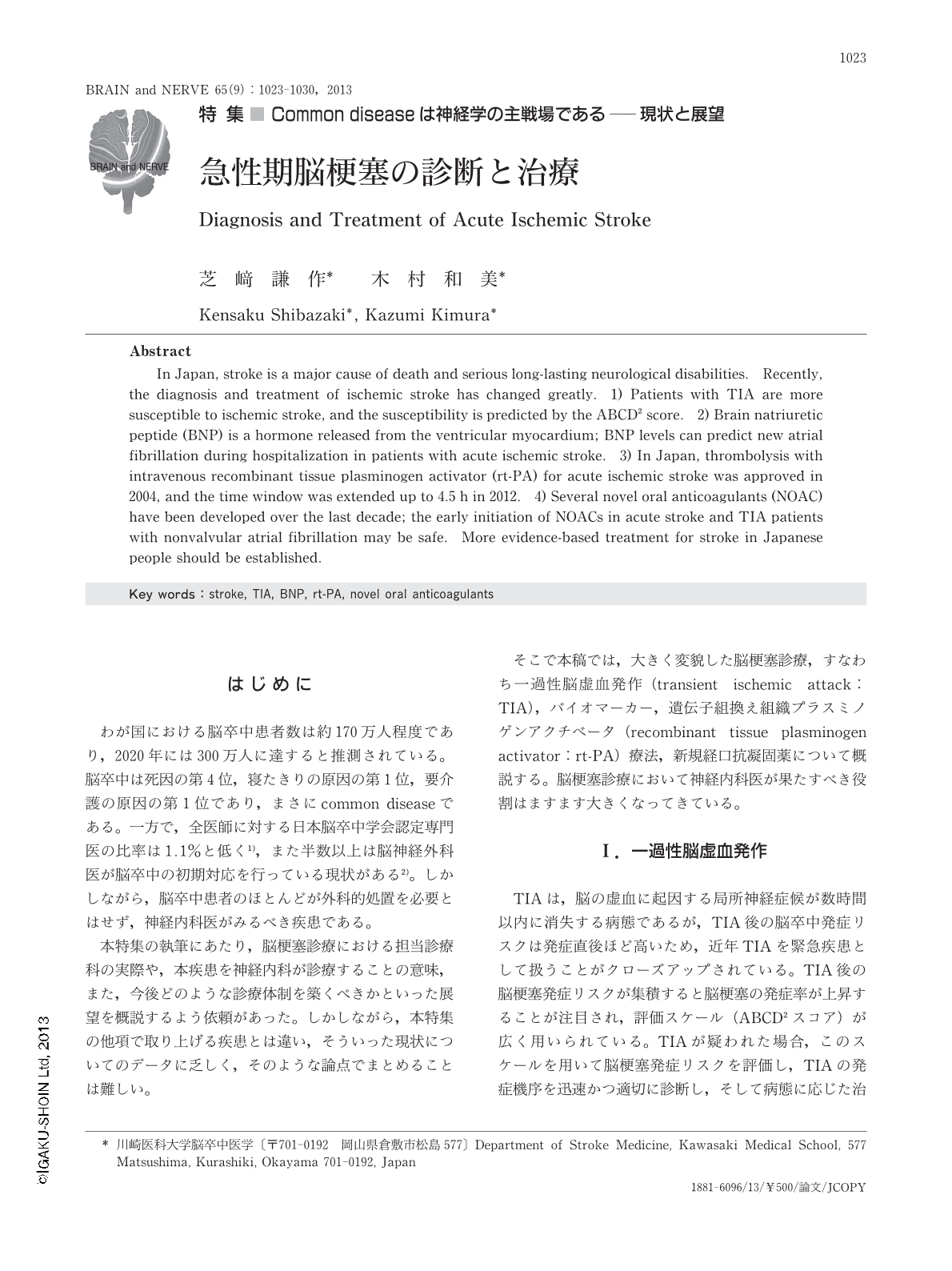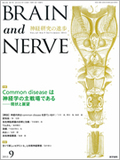Japanese
English
- 有料閲覧
- Abstract 文献概要
- 1ページ目 Look Inside
- 参考文献 Reference
はじめに
わが国における脳卒中患者数は約170万人程度であり,2020年には300万人に達すると推測されている。脳卒中は死因の第4位,寝たきりの原因の第1位,要介護の原因の第1位であり,まさにcommon diseaseである。一方で,全医師に対する日本脳卒中学会認定専門医の比率は1.1%と低く1),また半数以上は脳神経外科医が脳卒中の初期対応を行っている現状がある2)。しかしながら,脳卒中患者のほとんどが外科的処置を必要とはせず,神経内科医がみるべき疾患である。
本特集の執筆にあたり,脳梗塞診療における担当診療科の実際や,本疾患を神経内科が診療することの意味,また,今後どのような診療体制を築くべきかといった展望を概説するよう依頼があった。しかしながら,本特集の他項で取り上げる疾患とは違い,そういった現状についてのデータに乏しく,そのような論点でまとめることは難しい。
そこで本稿では,大きく変貌した脳梗塞診療,すなわち一過性脳虚血発作(transient ischemic attack:TIA),バイオマーカー,遺伝子組換え組織プラスミノゲンアクチベータ(recombinant tissue plasminogen activator:rt-PA)療法,新規経口抗凝固薬について概説する。脳梗塞診療において神経内科医が果たすべき役割はますます大きくなってきている。
Abstract
In Japan, stroke is a major cause of death and serious long-lasting neurological disabilities. Recently, the diagnosis and treatment of ischemic stroke has changed greatly. 1) Patients with TIA are more susceptible to ischemic stroke, and the susceptibility is predicted by the ABCD2 score. 2) Brain natriuretic peptide (BNP) is a hormone released from the ventricular myocardium; BNP levels can predict new atrial fibrillation during hospitalization in patients with acute ischemic stroke. 3) In Japan, thrombolysis with intravenous recombinant tissue plasminogen activator (rt-PA) for acute ischemic stroke was approved in 2004, and the time window was extended up to 4.5 h in 2012. 4) Several novel oral anticoagulants (NOAC) have been developed over the last decade; the early initiation of NOACs in acute stroke and TIA patients with nonvalvular atrial fibrillation may be safe. More evidence-based treatment for stroke in Japanese people should be established.

Copyright © 2013, Igaku-Shoin Ltd. All rights reserved.


